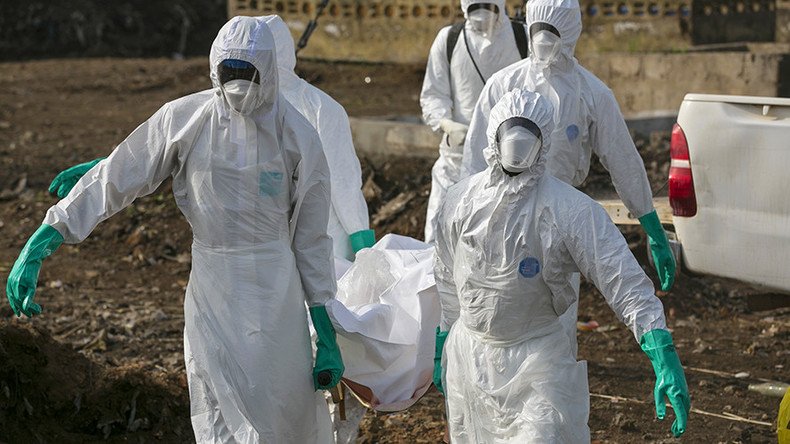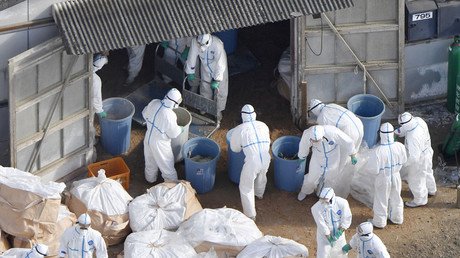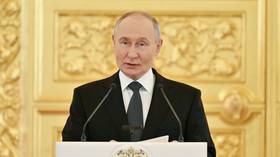Next pandemic could cost ‘millions of lives, trillions of dollars,’ World Bank group says

In the wake of the deadly Zika and Ebola virus outbreaks, most countries are still completely unprepared for another potential pandemic, a new study has found, warning that a serious outbreak could result in “millions of deaths and cost trillions of dollars.”
“We know that it is only a matter of time before the next pandemic hits us. We also know that there is a good chance that it will be severe,” said a 131-page report by the International Working Group on Financing Preparedness (IWG), established by the World Bank.
“It may mean death on a slow fuse, spreading insidiously through populations, unrecognized for years, like HIV in the 1980s. Or it may strike people down with stark violence and lightning speed, plunging national economies abruptly into chaos, like Ebola in West Africa in 2014-15. Whatever its mode of attack, the next largescale, lethal pandemic is at most only decades away,” the report warned.
“A severe pandemic could result in millions of deaths and cost trillions of dollars, and even smaller outbreaks can cost thousands of lives and cause immense economic damage,” researchers said.
Meanwhile, many countries “chronically underinvest” in key public health functions like disease surveillance, diagnostic laboratories and emergency operations centers, which enable the early identification and containment of outbreaks, the report, released on Thursday, noted.
"Pandemics can strike anywhere, and everyone is at risk – especially the poor and the vulnerable,” World Bank Group President Jim Yong Kim said in a statement.
“We must finally break the cycle of panic and neglect in our response to grave threats from infectious diseases. We have to ensure we are prepared, so the next outbreak does not become the next pandemic,” he added.
Although experts differ in their precise estimates of the cost of pandemics, all the figures are “alarmingly high,” stressed the report, which was titled From Panic and Neglect to Investing in Health Security: Financing Pandemic Preparedness at a National Level.
The most conservative estimates suggest that pandemics destroy 0.1 to 1.0 percent of global GDP, on a par with other high-profile threats such as climate change, while the annual global cost of moderately severe to severe pandemics is roughly $570 billion, or 0.7 percent of global income, the report said.
The estimated economic losses from infectious threats highlight the importance of improving preparedness, researchers noted.
"Preparedness at a national level is the first line of defense against pandemic threats, and thus the foundation of universal health security. Yet we have underinvested in the capabilities and infrastructure essential for preparedness,” Peter Sands, chair of the IWG and a senior fellow at Harvard University, said in a statement.
“Given the scale of risk to human lives and livelihoods, the investment case for financing preparedness is compelling. We must make it happen," he stressed.
So far, only 37 countries have completed the strict peer-reviewed assessments, called the Joint External Evaluation (JEE), of their preparedness capacities to identify their gaps and needs. The report said as many as 162 countries have not carried out the assessments, however, urging national governments, as well as international donors, to prioritize financing preparedness in their budgets.
In low- and middle-income countries that have calculated the cost of financing preparedness, the investment required is only about $1 per person per year, the study said.
“Outbreak preparedness is chronically under-funded, and we have been waiting for bold thinking on financing since at least the mid-nineties,” Margaret Chan, director-general of the World Health Organization (WHO), said.
“Implementing the IWG recommendations will ensure that every country mobilizes the resources necessary to prevent, detect, and respond to future outbreaks," she added.
The unpredictability of the occurrence of pandemics makes the case for investing in preparedness even more compelling, the report said, adding that influenza pandemics, for instance, show no predictable periodicity or pattern other than occurring roughly every three or four decades.
“There is a high probability that the world will experience a severe outbreak in the next 10 to 30 years that could destabilize societies and economies; but it’s anyone’s guess when and where it might emerge,” the report said.
Researchers laid out 12 recommendations to help prevent, identify, contain, and respond to infectious disease outbreaks, including getting all national governments to commit to conducting assessment of preparedness and animal health capacities by the end of 2019.














